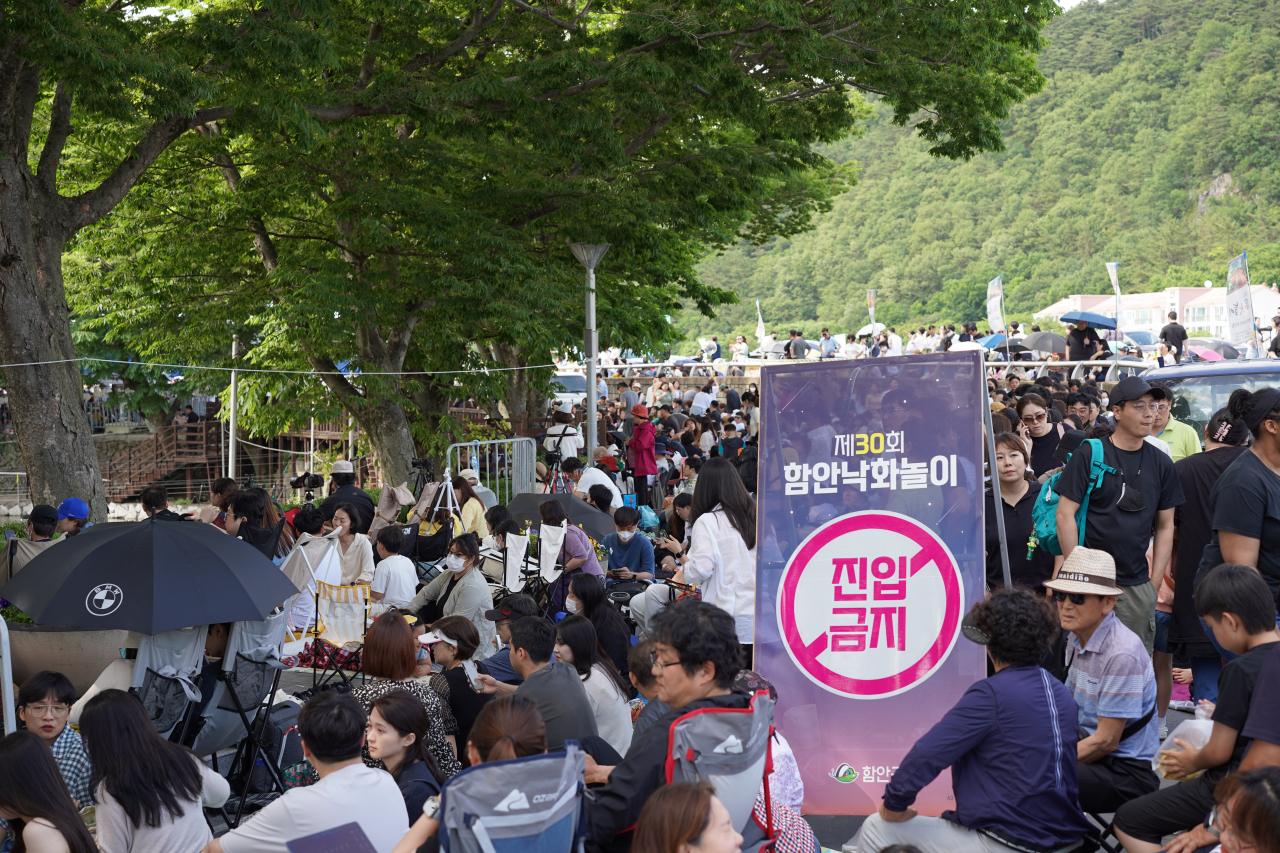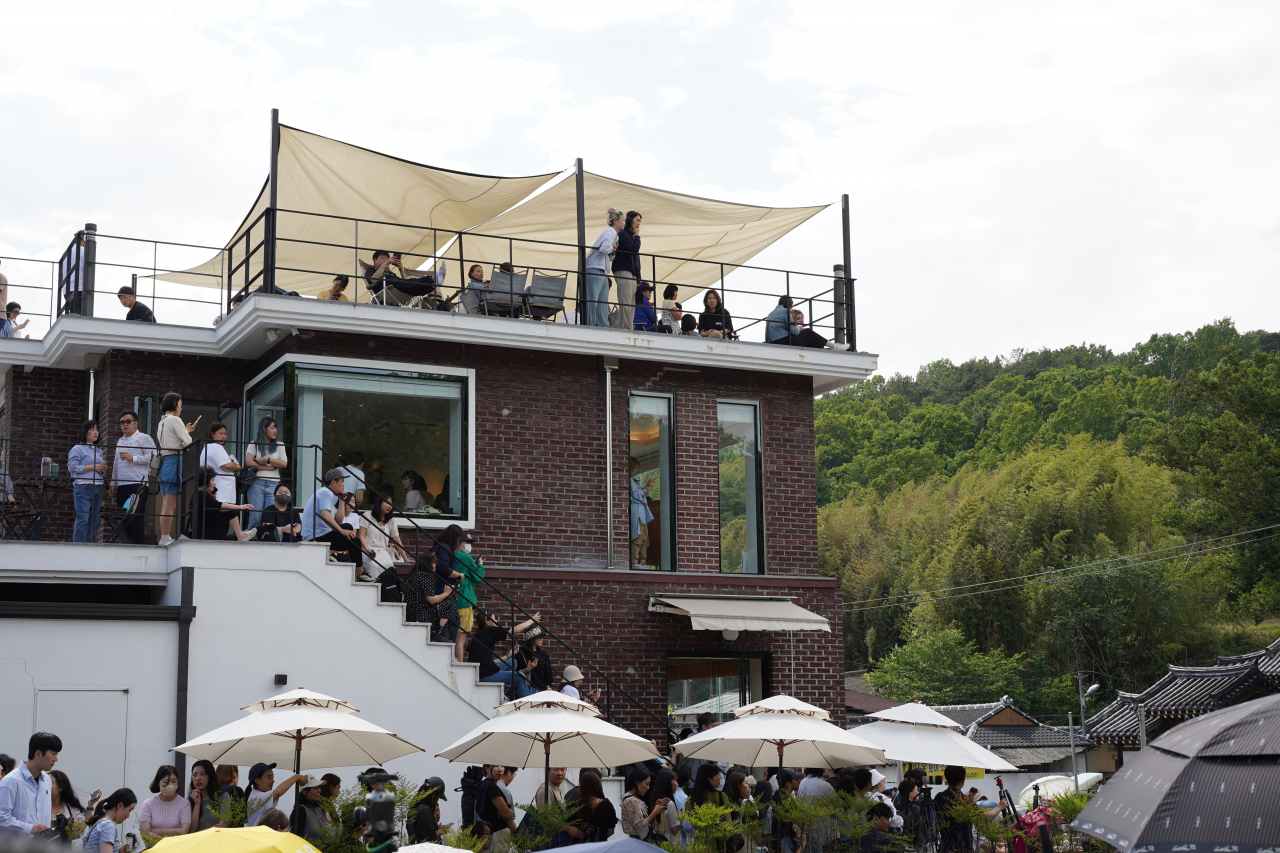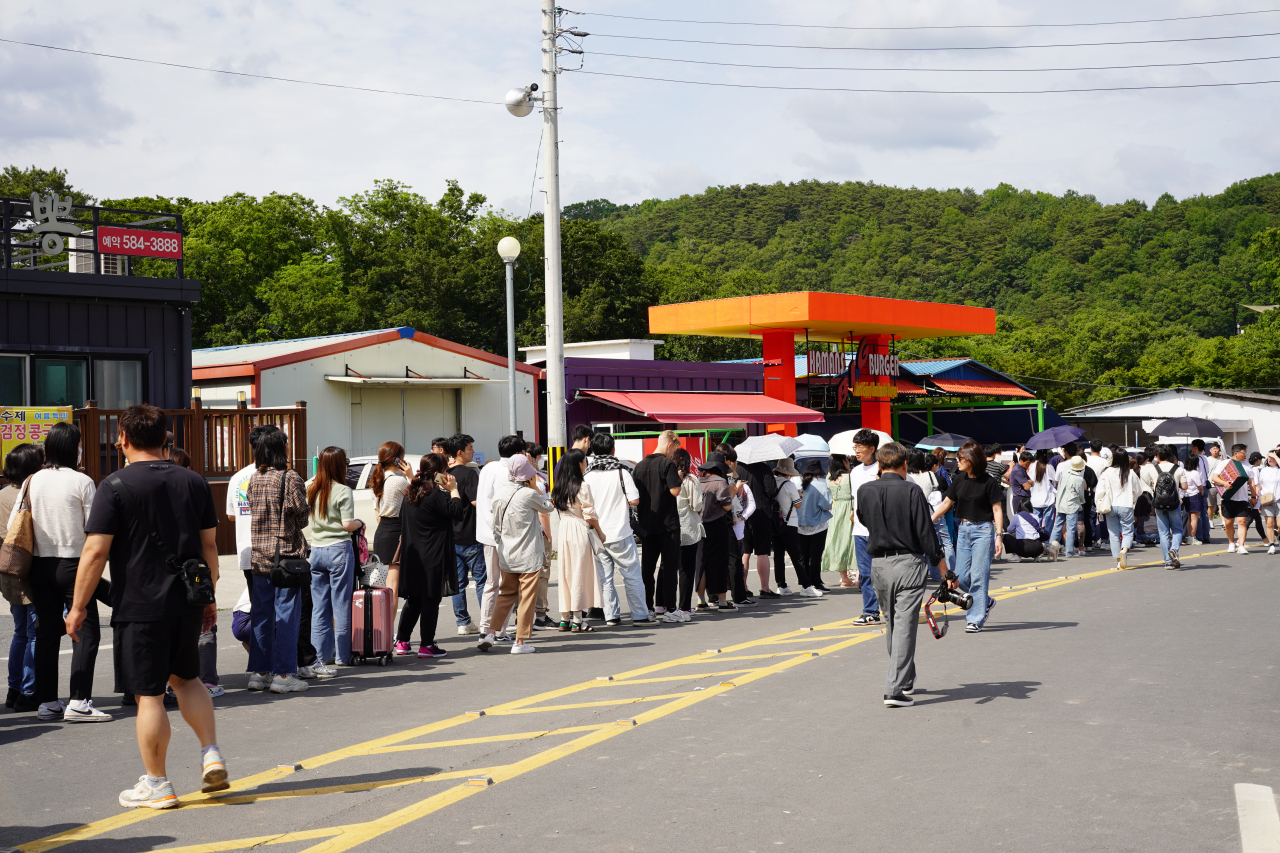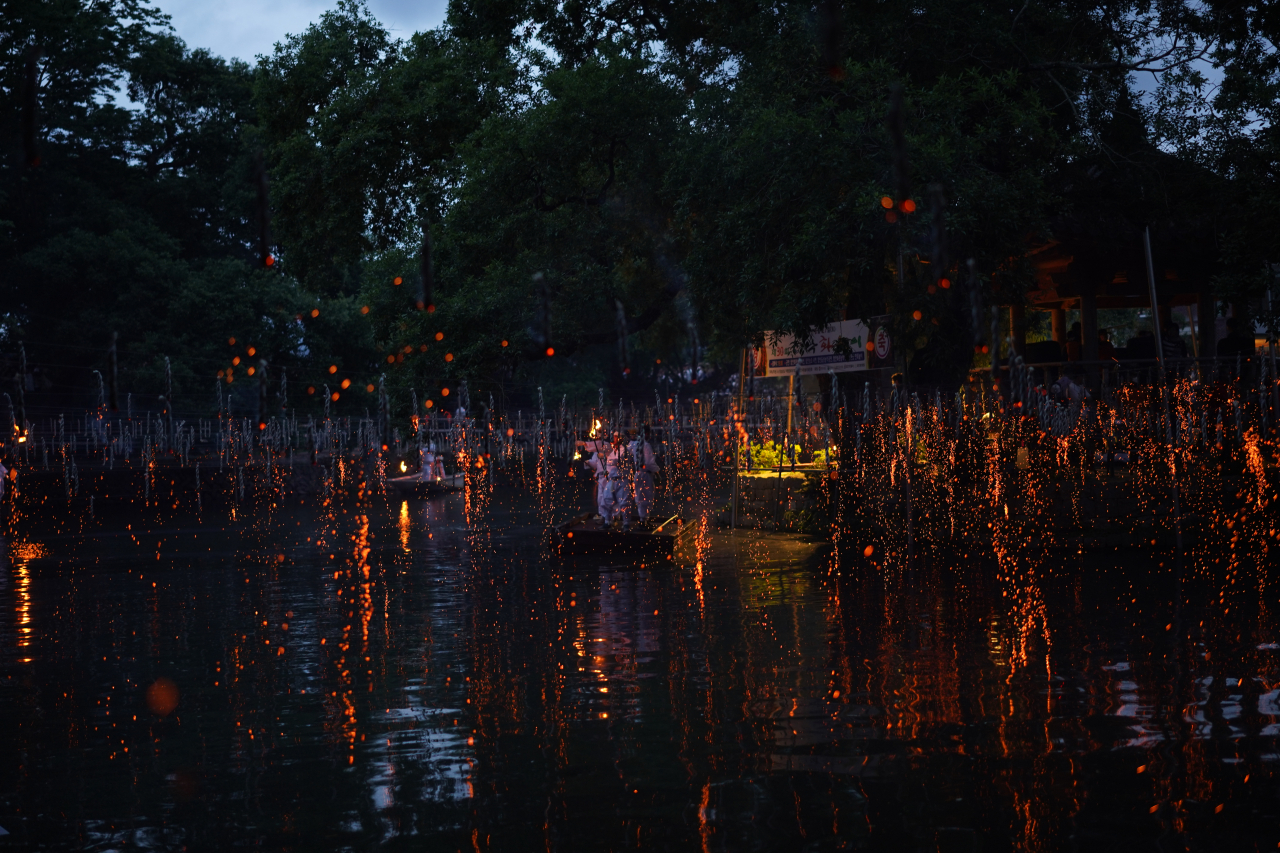 |
Visitors wait for the Haman Nakhwa Festival to start near Mujinjeong Pavilion in Haman, South Gyeongsang Province, on Saturday. (Lee Si-jin/The Korea Herald) |
Haman, South Gyeongsang Province, is a little-known county located some 350 kilometers southeast of Seoul.
The small, quiet village was overflowing with people from around the country who had come to see this year's Nakhwa Festival on Saturday.
Though the event was originally a regional festival enjoyed by only those who knew about it, the local fireworks display went viral during the COVID-19 pandemic when public broadcaster KBS featured the cultural event in its variety show “1 Night 2 Days” and in the period drama “Bloody Heart” (2022).
The festival attracted more than 15,000 tourists in May 2022. Due to the huge demand, the event was held one more time in October of the same year for the first time.
People sharing their anticipation for the festival on SNS was a sign that there would be a large crowd. Just how large, however, the county had no idea. On Saturday, it became clear that the county was not prepared for the huge onslaught of people.
When I arrived at the festival site at 1 p.m., the lines of cars made me realize that I was already "late." The festival was to kick off at 7 p.m.
Little did I know that it would be just the start of my many challenges that day.
Nearby parking lots filled up early and visitors needed to walk 15-20 minutes to get to the festival site. Many drivers just left their cars on the street, turning the four-lane road into a two-lane road.
Nakhwanori is a firework festival, where oak charcoal powder wrapped in "hanji" (Korean mulberry paper) is set on fire, creating balls of fire falling into the small pond at Mujinjeong Pavilion.
Hundreds of people had already installed their cameras and smartphones on tripods around the pond to capture the dreamlike moment. Some could be heard saying that they had come the day before to get a good seat.
Visitors endured the early summer sun for more than five hours, sitting or lying down on their picnic mats.
 |
Visitors sit on the rooftop and stairs of a nearby cafe to get a better view of the fireworks. (Lee Si-jin/The Korea Herald) |
 |
Some visitors sitting behind safety fences had arrived the previous day to reserve a good seat for the Nakhwa Festival. (Lee Si-jin/The Korea Herald) |
If you were hungry, you had to wait a good 30 to 40 minutes just to order your food at nearby restaurants, food trucks and street-side "pojangmacha" or tented eateries.
The areas around the eateries were filled to the brim with crowds waiting to order their food.
 |
Tourists wait to order food at a nearby restaurant in Haman, South Gyeongsang Province, on Saturday. (Lee Si-jin/The Korea Herald) |
The lines to use the toilets were as long as 300 meters.
The situation worsened as smartphones, the internet and the mobile messenger app KakaoTalk didn't work at the festival site due to the unexpected volume of call traffic.
The organizer considered canceling the fireworks to keep visitors safe, hoping not to see a repeat of the Itaewon tragedy from October last year.
News about the cars on the highways headed for the Mujinjeong Pavilion being turned around and sent back were shared as people waited in this line or that.
There were guides, security personnel and other volunteers, but they were simply not enough to run the festival smoothly.
Getting out of Haman was another problem.
Because Mujinjeong Pavilion is located in a small village, most of the car lanes were narrow.
Instead of the fireworks, the lines of car headlights lit up the county all the way to the highway tollgates.
Almost 50,000 visitors had descended upon Haman, a county with just 60,000 residents, for this year's Nakhwa Festival.
Facing criticism online over the lack of preparation, Haman's governor apologized over the Nakhwa Festival fiasco on Sunday, promising to make improvements and correct what went wrong.
One-time mistakes can be forgiven.
But Haman will need to do its utmost to win back people's hearts and turn the Nakhwa Festival into an event that can be enjoyed by “everyone.”
 |
Haman Nakhwa Festival (Lee Si-jin/The Korea Herald) |






![[Today’s K-pop] Blackpink’s Jennie, Lisa invited to Coachella as solo acts](http://res.heraldm.com/phpwas/restmb_idxmake.php?idx=644&simg=/content/image/2024/11/21/20241121050099_0.jpg)
